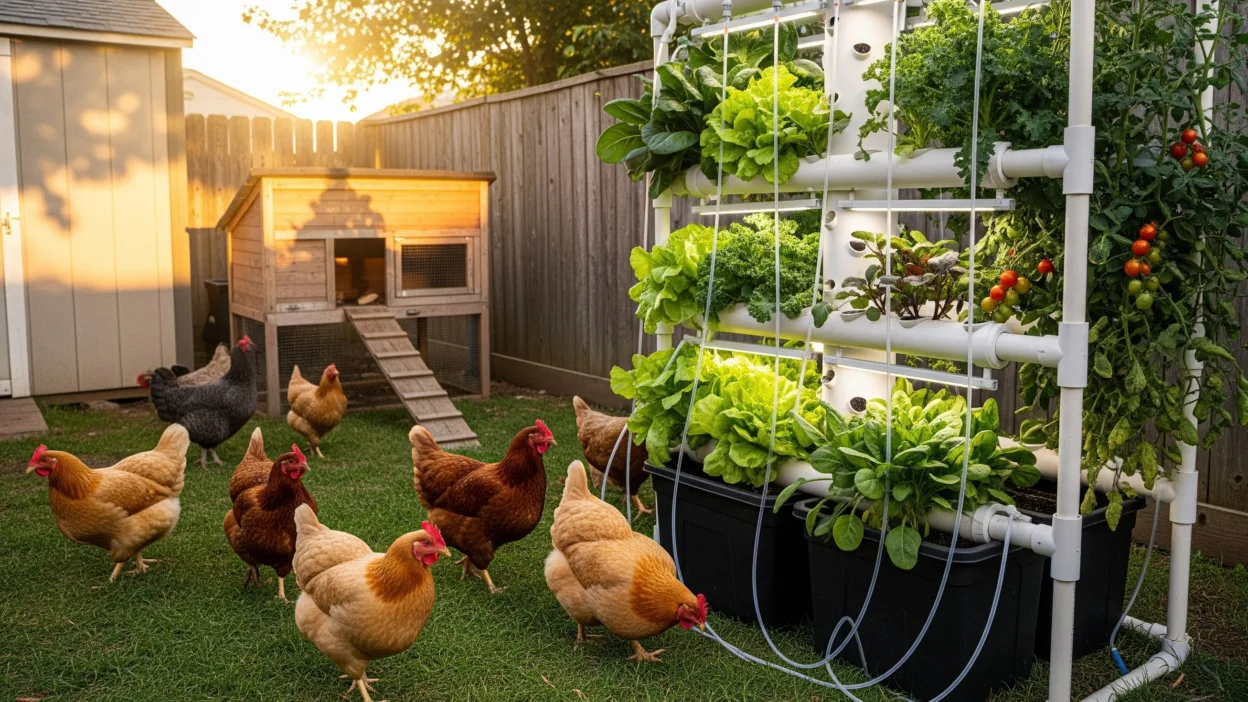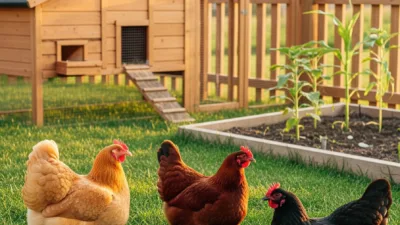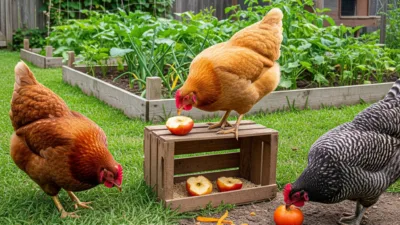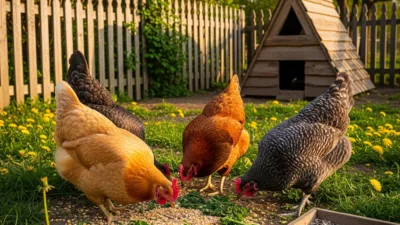Backyard chickens have become increasingly popular in American households, especially among families seeking healthier food and a more sustainable lifestyle. At the same time, hydroponic gardening, growing plants without soil, has surged in popularity thanks to its efficiency, year-round productivity, and ability to thrive in small spaces.
Now imagine combining the two. Chickens and hydroponics may seem like an unusual pair, but when managed together, they form a symbiotic system that produces high-quality food, recycles waste, and reduces your environmental footprint.
In this article, we’ll dive deep into why raising backyard chickens alongside hydroponic gardening is such a powerful combination, the benefits it brings, and step-by-step strategies to create your own sustainable system.
Why Pair Chickens with Hydroponics?
Backyard chickens and hydroponics complement each other naturally. Chickens produce manure rich in nitrogen, phosphorus, and potassium, nutrients plants need for growth. Hydroponic systems, on the other hand, rely on nutrient solutions to feed plants since there’s no soil. By turning chicken waste into a nutrient source, you create a closed-loop system that reduces inputs and increases productivity.
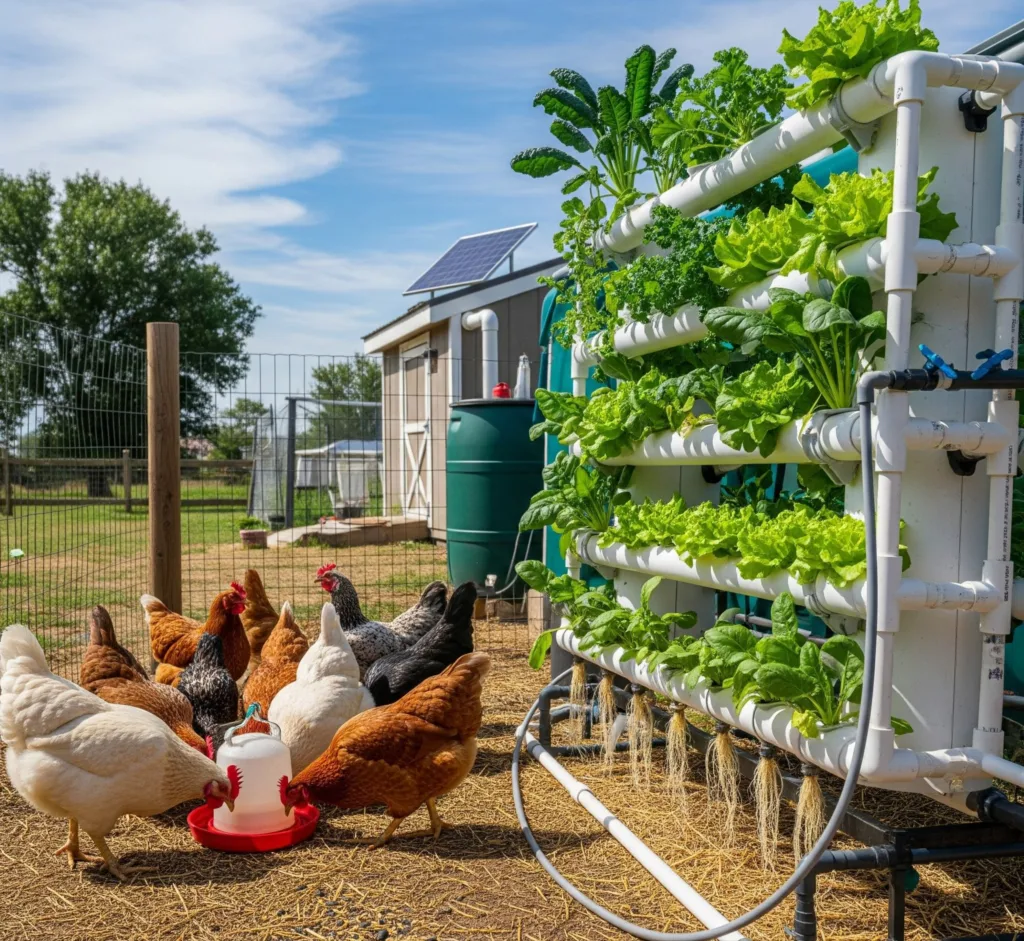
At the same time, hydroponic gardens can provide greens and herbs for chickens, reducing feed costs while giving your flock a more diverse, nutrient-rich diet.
The Symbiotic Relationship Explained
Think of chickens and hydroponics as two systems that “feed” each other:
- Chicken Waste → Plant Fertilizer: Chicken manure can be composted, aged, or processed into nutrient tea for hydroponic systems.
- Hydroponic Greens → Chicken Feed: Leafy greens, herbs, and trimmings from your hydroponic garden become healthy chicken snacks.
- Shared Benefits: Chickens provide eggs and garden inputs, while hydroponics produces vegetables and herbs for the family.
It’s a sustainable cycle where very little goes to waste.
Benefits of Combining Backyard Chickens and Hydroponics
1. Sustainable Waste Recycling
Chicken droppings often go unused or discarded. Instead of waste, you’re turning them into a valuable nutrient stream for plants.
2. Cost Savings
- Reduce fertilizer costs for hydroponics by using chicken manure compost tea.
- Cut down on store-bought feed by offering hydroponic greens and trimmings.
3. Year-Round Food Production
- Chickens lay eggs even in cooler months with proper care.
- Hydroponics allows you to grow lettuce, spinach, basil, and tomatoes indoors during winter.
4. Compact and Urban-Friendly
This combo works in suburban or urban backyards where space is limited. A small coop and a vertical hydroponic system can fit side by side.
5. Healthier Food for Your Family
Fresh eggs plus pesticide-free vegetables create a reliable food source for your household.
6. Educational Value
Families with children benefit from hands-on lessons in biology, sustainability, and self-sufficiency.
Setting Up Chickens and Hydroponics Together
Let’s break down the process of integrating backyard chickens with hydroponic gardening.
Step 1: Choose the Right Hydroponic System
There are several hydroponic methods, but some pair better with chicken inputs:
- Deep Water Culture (DWC): Simple, great for leafy greens.
- Nutrient Film Technique (NFT): Efficient for herbs and smaller plants.
- Media Beds: Ideal if you want to use composted chicken manure tea.
For beginners, DWC and NFT are cost-effective and easy to manage.
Step 2: Process Chicken Manure Safely
Raw chicken manure is too “hot” and can burn plants. It must be treated before use.
Safe methods include:
- Composting: Age chicken manure for 6–12 months to reduce ammonia.
- Manure Tea: Brew aged manure in water, strain, and dilute to create liquid fertilizer for hydroponics.
- Commercial Converters: Some systems process poultry waste into hydroponic-safe solutions quickly.
Step 3: Select the Right Plants
Not all plants thrive equally with chicken-manure-based nutrients. Choose crops that align well with nitrogen-heavy feeds:
- Leafy greens: Lettuce, kale, spinach, Swiss chard.
- Herbs: Basil, parsley, cilantro.
- Fruiting plants (with adjustments): Tomatoes, peppers, cucumbers.
Step 4: Feed Hydroponic Greens Back to Chickens
Hydroponic gardens often produce surplus leaves or trimmings. Chickens love these as treats:
- Lettuce, kale, and spinach are favorites.
- Herbs like basil or parsley help boost immunity.
- Avoid feeding toxic plants like onion or garlic greens.
This creates a natural feedback loop where nothing goes to waste.
Step 5: Manage Space Wisely
- Place the coop near, but not inside, your hydroponic setup.
- Use rainwater runoff or greywater recycling where legal and safe.
- In urban areas, vertical hydroponic towers save space while leaving ground area for chickens.
Practical Design Ideas
Urban Backyard Setup
- A compact chicken coop housing 4–6 hens.
- Vertical hydroponic towers for leafy greens.
- Compost tumbler to process manure before turning it into hydroponic nutrient tea.
Suburban Setup
- Larger coop with a run.
- Greenhouse attached with hydroponic beds.
- Rainwater collection system tied into the hydroponics.
Homestead Scale
- Multiple chicken coops.
- Full aquaponic/hydroponic greenhouse system.
- Integrated composting and water cycling.
Challenges and Solutions
Challenge 1: Manure Safety
Raw chicken waste carries pathogens like salmonella.
Solution: Always compost manure fully before applying to hydroponic systems.
Challenge 2: Nutrient Balancing
Chicken manure tea may not provide a perfectly balanced nutrient profile for all plants.
Solution: Supplement with commercial hydroponic nutrients when necessary.
Challenge 3: Space Limitations
Not everyone has a large backyard.
Solution: Use vertical systems, window hydroponics, or indoor grow lights combined with a small coop.
Challenge 4: Initial Setup Costs
Hydroponic systems and coops require upfront investment.
Solution: Start small, try a 2-hen coop with a tabletop hydroponic kit, then scale up.
Best Chicken Breeds for a Hydroponic Pairing
If you’re starting fresh, choose hardy, productive chicken breeds that adapt well to smaller spaces:
- Rhode Island Red: Reliable layers, good temperament.
- Plymouth Rock: Friendly, cold-hardy, and versatile.
- Leghorns: Prolific layers, excellent in urban setups.
- Orpingtons: Docile and adaptable, great for families.
These breeds produce steady eggs while staying manageable for backyard systems.
Example Crops to Grow in a Chicken-Hydroponic System
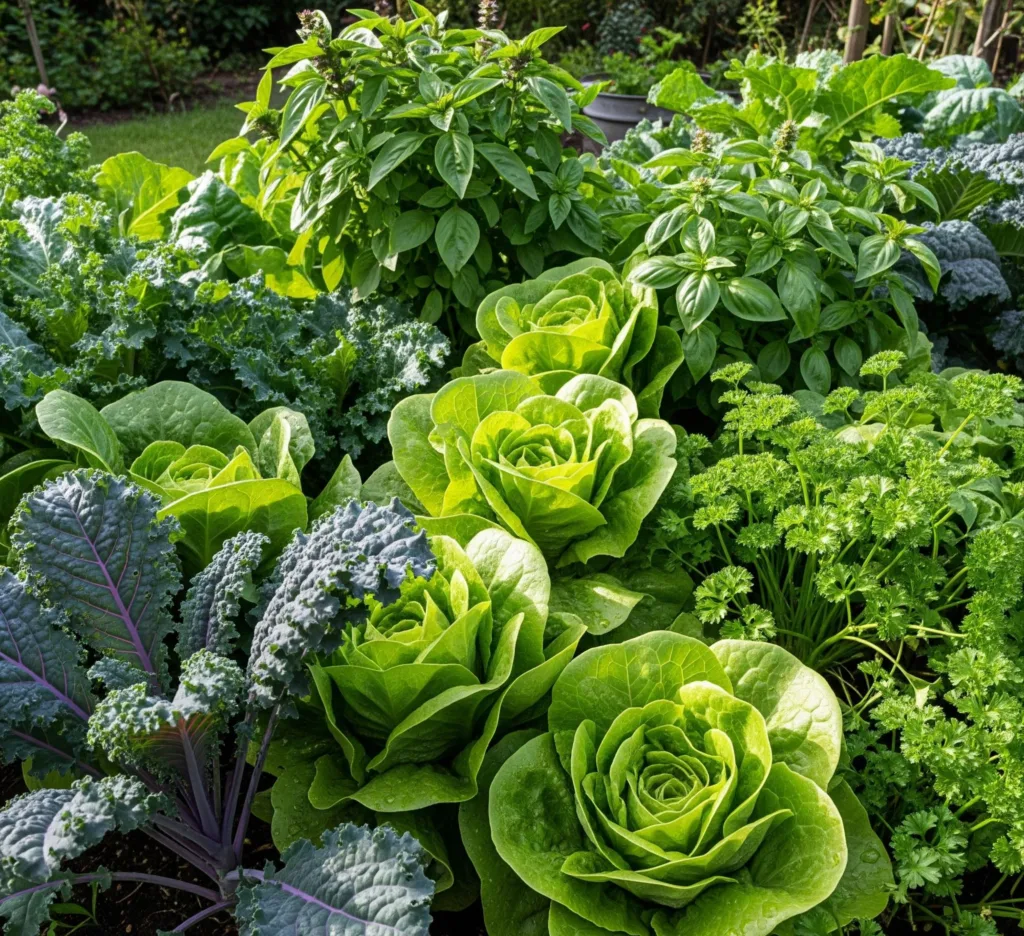
- For Chickens: Kale, lettuce, basil, parsley.
- For Humans: Tomatoes, peppers, cucumbers, strawberries.
- Dual Use: Swiss chard, spinach, and herbs that both chickens and humans enjoy.
This ensures both your flock and your family benefit from the system.
Seasonal Tips for Success
- Spring: Expand hydroponic planting; chickens lay heavily after winter.
- Summer: Use hydroponic greens to supplement diet during heat stress.
- Fall: Compost chicken manure from summer for winter nutrient tea.
- Winter: Grow indoors with LED grow lights; supplement chicken feed with hydroponic greens.
Long-Term Sustainability
Over time, this combination system reduces household reliance on store-bought food and creates a mini-ecosystem in your backyard. It aligns with the growing movement toward regenerative homesteading, not just producing food, but doing so in a way that improves the land and reduces waste.
Conclusion
Backyard chickens and hydroponic gardening may seem like separate hobbies, but together they create one of the most sustainable, cost-effective, and rewarding systems for modern homesteads. From recycling waste into nutrient-rich fertilizer to providing year-round fresh food, this combo is a powerful way to increase food security while reducing your environmental footprint.
Whether you live in a city with limited space or on a larger suburban plot, combining chickens with hydroponics is not only possible but deeply rewarding. Start small, experiment with your setup, and let your chickens and plants teach you how to create a thriving backyard ecosystem.
By integrating these two practices, you’ll move closer to true self-sufficiency while enjoying healthier eggs, fresher vegetables, and a greener lifestyle.
